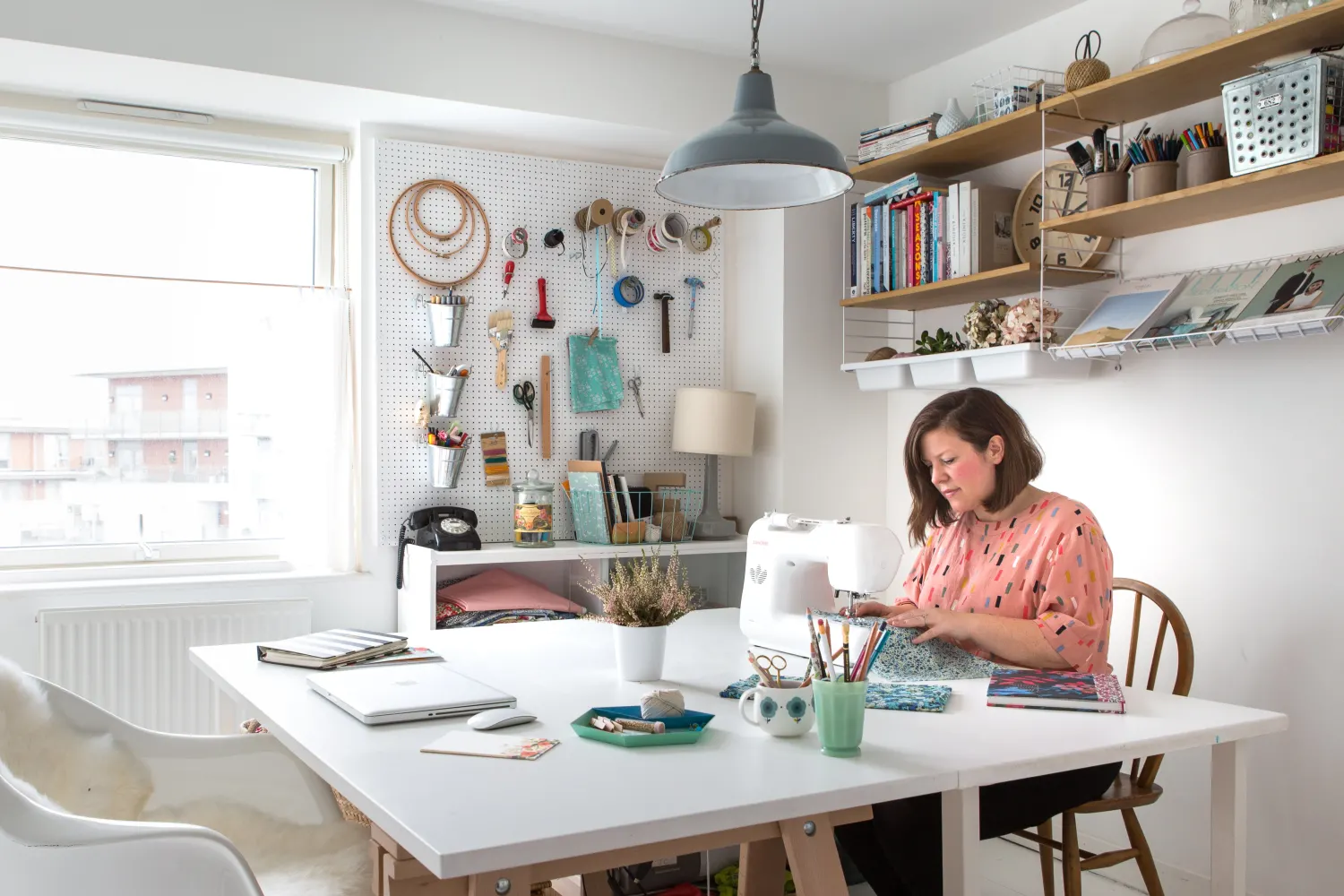No matter your medium of choice – oil painting, sketching or sculpture creation – having a space at home to express yourself creatively is essential. This guide explores how you can set up an art studio easily in just a few steps.
Artists know the value of having space to themselves is paramount, so finding a quiet area away from the main living areas in your house – be it a spare bedroom, an empty closet, or even part of the garage – to work is ideal.
Space
Home art studios should be situated away from other rooms of your house to facilitate peaceful, productive working conditions. If a separate room isn’t feasible, try using curtains and room dividers to divide large areas into more manageable ones, or create multiple workspaces within different parts of the home.
Space is essential in keeping supplies organized and accessible. Your space options could range from an extra bedroom, closet or dining room that rarely gets used – depending on your needs and budget – all the way up to an entire home art studio.
An attic or basement are great locations to use as in-home art studios, as long as proper ventilation and dehumidifier are in place to prevent moisture damage to canvases. Alternately, you could make simple changes in your garage so it functions as an artist workspace instead. Add personal touches by decorating it with personal photos or awards framed on walls; collectible memorabilia, and colorful wall decorations that reflect who you are!
Lighting
Home art studios provide the ideal space for artistic expression and creation; however, these spaces may often become disorganized over time.
No matter if your art forms include painting or jewelry making, ensuring the ideal home studio setup for maximum results is essential. These studios could take the form of separate rooms in your house, garage spaces, sheds, or even just an area under your stairs.
Lighting is of utmost importance in home art studios, as you will require bright natural daylight in order to see the colours of your paints accurately. A good option would be purchasing daylight bulbs with a CRI of 80+ and CCT around 5500K from hardware stores or online.
Studio locations can quickly become disorganized and stained, so consider choosing easy-to-clean floors like linoleum or vinyl material for your studio location. Curtains or room dividers may also help provide separation within a shared bedroom space for an art studio.
Equipment
If you want to establish your own home art studio, the appropriate equipment will be essential. This may include paintbrush sets, easels, paint, brushes and various tools – plus additional pieces if you work in clay or paper mache mediums.
Lighting is also key. Natural lighting is always best, but sometimes that’s not possible in our homes. When choosing artificial light sources like daylight bulbs or similar products that mimic natural illumination.
Your workspace must also provide easy access to water for washing paint brushes and materials. A slop sink can be especially helpful as project debris won’t clog up regular kitchen or bathroom sinks; mason jars filled with paint can be stored easily on an upcycled wine rack while pegboard walls allow you to hang hooks and bins with tools on them for quick and easy storage purposes.
Storage
Real Homes states that any room can become an art studio if customized according to your creative needs and space requirements, be it a spare bedroom, garage or dining area that rarely sees use.
It can include a table, desk, painting easel and storage trolley stocked with various creative supplies as well as creative supplies themselves. Furthermore, it’s essential to keep garbage cans and waste bags on hand, along with installing either a dehumidifier or hose to reduce the chance of water-based paints or clay spills overflowing the workspace.
Chest drawers will help organize larger art supplies while desk sketch boxes provide space for smaller ones. Circulator fans are an effective way of providing ventilation and keeping the air clean; additionally, if using toxic chemicals such as turpentines or others, make sure they’re kept locked away so only adults can access them; additionally, install a fire alarm as a preventative measure in case something goes amiss.

